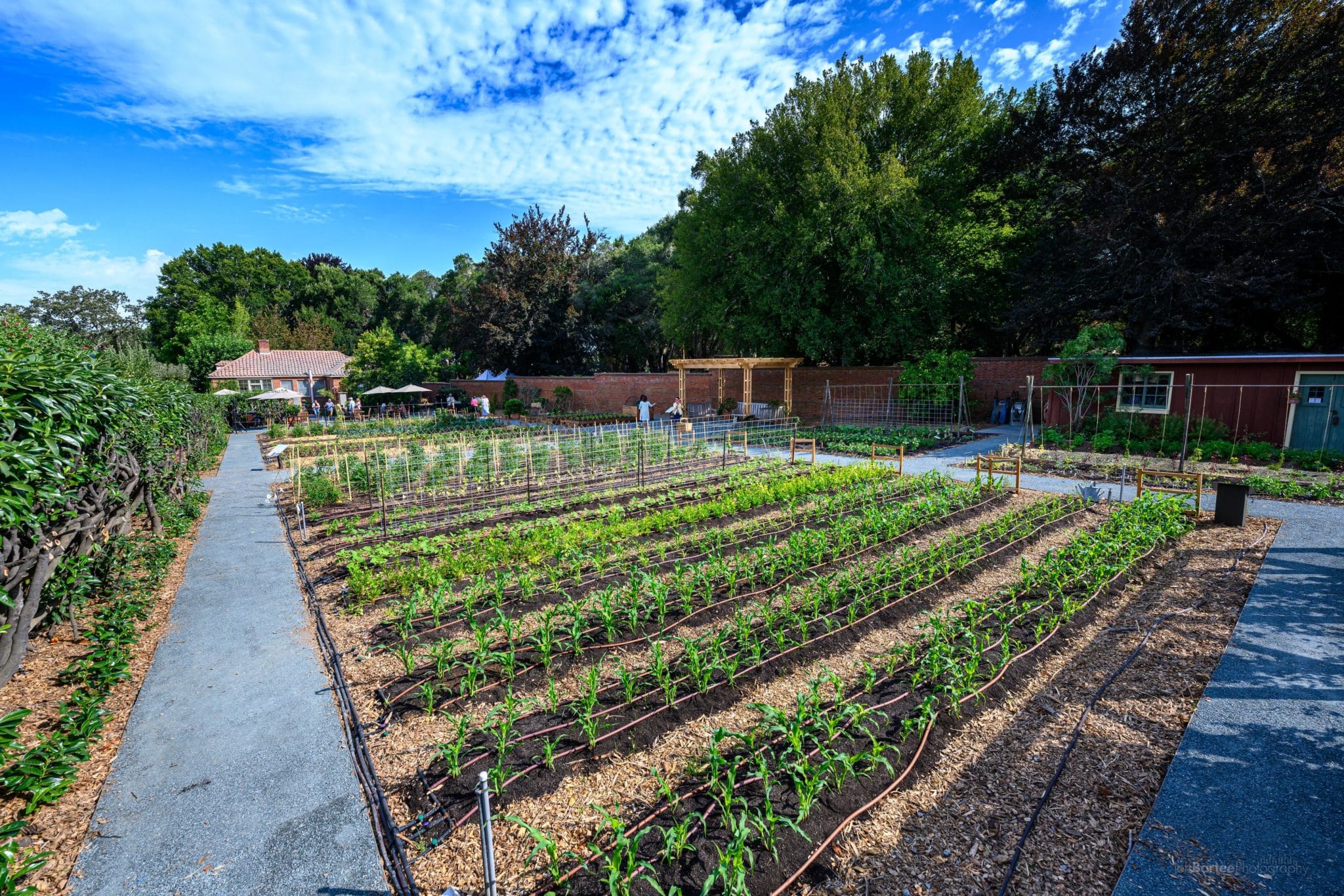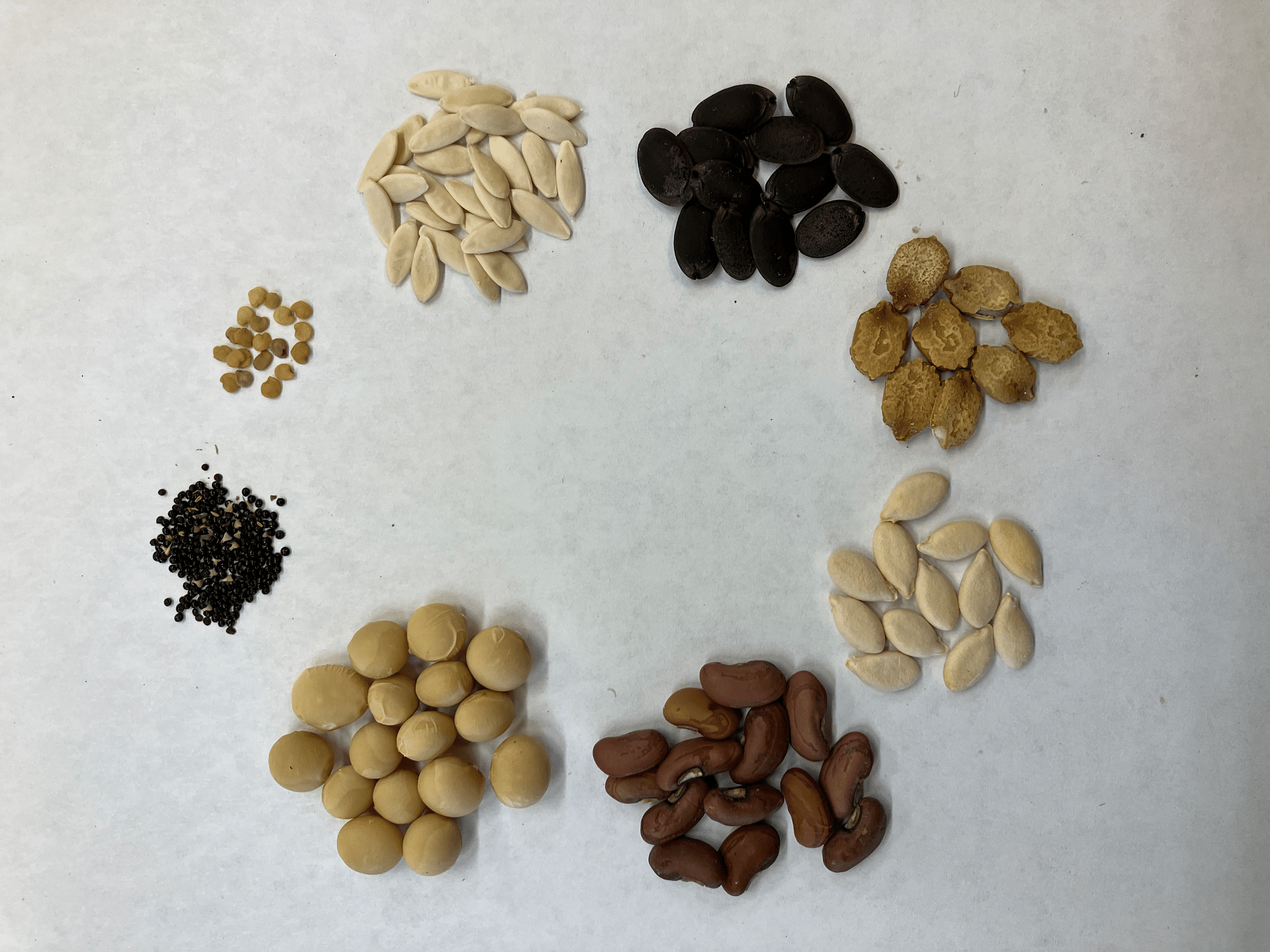Sharing Seeds, Sharing Culture

by John Chau, Plant Records Specialist
In the summer of 2022, Filoli’s Vegetable Garden opened to the public for the first time. This land has been used for growing produce since the inception of the Garden, serving as a source of fresh vegetables, fruits, and herbs for the Bourn and Roth families, and then for the staff when Filoli became part of the National Trust for Historic Preservation. The Vegetable Garden showcases food crops from different cultures of the Bay Area, connecting people with plants from different parts of the world. Filoli is partnering with members of the local community to guide portions of the Vegetable Garden in different seasons, working together to plan, source, grow, and use a diversity of food crops.

In my role at Filoli as the Plant Records Specialist, I keep track of all the plants in the Garden from beginning to end. In the Vegetable Garden, that means tracking plants from seeds being sown to transplanting to the plants’ eventual removal. This year, I was asked to help with the design of a section of the Vegetable Garden in the summer season for Chinese vegetables. My family is originally from southern China and Hong Kong, and has been growing vegetables in their home garden since immigrating to the U.S. Like gardeners everywhere since time immemorial, they shared seeds with family, friends, and neighbors. In this way, they acquired varieties, usually unnamed, with exceptional eating quality (rather than storage ability and appearance like with commercial produce). Every year when growing their vegetables, my family let a few plants mature and set seed, which they then collect so they can plant their favored vegetables again the next year. Some of these seeds are now being planted at Filoli.

This summer, as part of the Chinese vegetable section of the Vegetable Garden, we will be growing a variety of Asian melons, beans, greens, and other vegetables. Although the most well-known Chinese vegetables are probably leafy greens like bok choy and Chinese broccoli, these are cool-season crops that are grown in the spring or fall. Our summer Vegetable Garden will showcase these perhaps more unusual, but delicious and beautiful, warm-season crops:
- Winter Melon, 冬瓜 (Benincasa hispida) – These vining plants produce huge wax-covered melons that can be stored over the winter. The fruits are not sweet, but have a delicate flavor that is appreciated in soups, stews, stir-fries, and candied.
- Bitter Melon, 苦瓜 (Momordica charantia) – These delicate looking vines produce bumpy fruits that are indeed bitter, which is a flavor that is appreciated in Chinese cuisine and thought to be important in balancing health.
- Luffa, 絲瓜 (Luffa aegyptiaca) – When fully mature, the fruits of this vining plant are fibrous and can be dried to make an abrasive sponge, but when young, they can be cooked and eaten as they are tender and delicately sweet.
- Cucumber, 黄瓜 (Cucumis sativus) – The Chinese varieties of cucumber can be seasoned raw for a cooling appetizer or cooked in stir-fries and soups.
- Yardlong bean, 長豆角 (Vigna unguiculata) – Though not quite a yard long, the beans of this vining plant can exceed 1.5 feet, and are popular in stir-fries and stews.
- Amaranth, 莧菜 (Amaranthus tricolor) – This variety of amaranth is grown for its nutritious leaves, which can be green or red, and cooked in stir-fries or soups.
- Eggplant, 茄子 (Solanum melongena) – The Chinese varieties of eggplant are slender and can be cooked in braises and stir-fries.
- Hot Pepper, 辣椒 (Capsicum annuum) – Although originally from the Americas, hot peppers have become essential in cuisines around the world, including Sichuan and Hunan.
- Chinese Chives, 韮菜 (Allium tuberosum) – These strap-shaped leaves have a strong garlic-like flavor that is popular in dumpling fillings and stir-fries.
- Soybean, 黃豆 (Glycine max) – Although not commonly used fresh in cooking, soybeans are essential to Chinese cuisine as the primary ingredient in tofu, soy sauce, and soy milk.
I’m looking forward to a fruitful summer, seeing our melons and beans hanging from the trellis tunnel in the Vegetable Garden and eating lots of winter melon soup!
